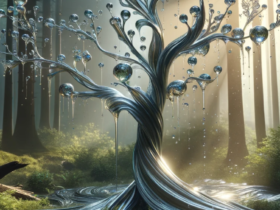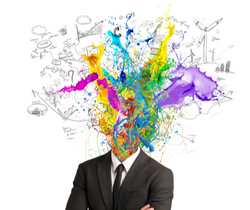In recent years, the world of art has undergone a significant transformation with the introduction of augmented reality (AR) technology. AR is a type of technology that superimposes digital images and information onto the real world, allowing for an interactive and immersive experience. As the use of AR becomes more widespread, it is revolutionizing the way we create, view, and interact with art.
One of the most significant benefits of AR in the art world is its ability to enhance creativity. With AR, artists can bring their work to life and create interactive installations that engage the audience in a new and exciting way. For example, an artist can create a mural that, when viewed through an AR-enabled device, transforms into a 3D sculpture that the audience can walk around and interact with.
AR is also providing new opportunities for artists to collaborate and work together on large-scale projects. With AR, artists from all over the world can contribute to a piece of art, making it a truly collaborative and global effort. This creates a sense of community and fosters creativity in a way that was not possible before.

Another advantage of AR in the art world is its ability to provide a more accessible experience for viewers. With AR, anyone with a smartphone or tablet can experience the artwork, regardless of their location or ability to travel to a physical gallery. This opens up new possibilities for artists to reach a wider audience and for viewers to engage with art in a more inclusive way.
AR is being used in various art forms, including painting, sculpture, and performance art. In the world of painting, artists are using AR to create interactive installations that blur the line between the physical and digital worlds. In sculpture, AR is being used to create pieces that change shape and color based on the viewer’s perspective, creating a unique and personalized experience for each individual.
In performance art, AR is providing new possibilities for immersive and interactive experiences. For example, an AR-enabled theater production can create an immersive environment where the audience can interact with the characters and scenery in real-time. This creates a unique and engaging experience that cannot be replicated in a traditional theater setting.

As AR technology continues to evolve, we can expect to see even more innovative and exciting applications in the world of art. From creating interactive installations to enhancing accessibility for viewers, AR is transforming the way we create, view, and experience art. As we embrace this new technology, we are entering a new era of creativity and collaboration in the art world.
One of the most significant advantages of AR in art is that it allows for an immersive experience that goes beyond simply looking at a painting or sculpture. With AR, viewers can step inside a virtual world where the artwork comes to life, and they can explore it from every angle. For example, using a smartphone or tablet, a viewer can point their camera at a painting and watch as the colors and textures of the artwork shift and change in real-time.
Another advantage of AR in art is that it can make art more accessible to a broader audience. AR can be used to create virtual exhibitions that can be accessed from anywhere in the world, allowing art lovers to experience artworks that they might not have been able to see in person otherwise. Additionally, AR can make art more interactive, providing viewers with a deeper understanding of the artwork and the artist’s intentions.

AR also has the potential to transform the way art is created. Artists can use AR to experiment with different materials and techniques and to create digital versions of their artwork that can be shared with a wider audience. AR can also be used to create collaborative artworks, allowing artists to work together in real-time, regardless of their location.
However, as with any new technology, there are also challenges and limitations associated with AR in art. For example, some argue that AR could distract from the actual artwork, drawing attention away from the physical piece and the artist’s original intention. Additionally, not everyone has access to the technology required to experience AR art, which could create an accessibility issue.
In conclusion, AR has the potential to revolutionize the art world, offering new ways for artists to create and for viewers to experience art. While there are still challenges to overcome, the opportunities that AR presents for artists and art lovers alike cannot be ignored. As AR technology continues to advance, we can expect to see even more innovative uses of AR in the art world, creating a new era of artistic expression and engagement.
Also read about our post on Investment Made Easy: How Rakuten Trade Can Help You Make Informed Investment Decisions










































